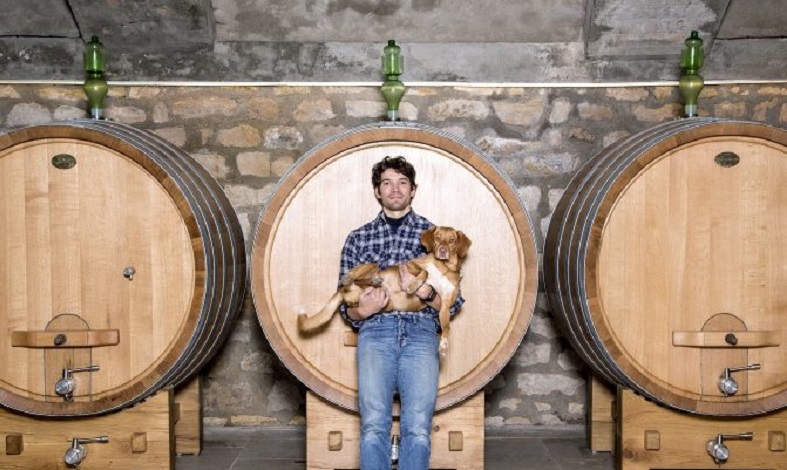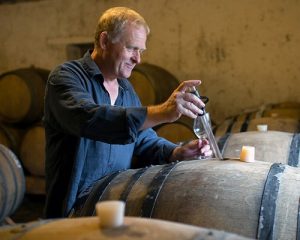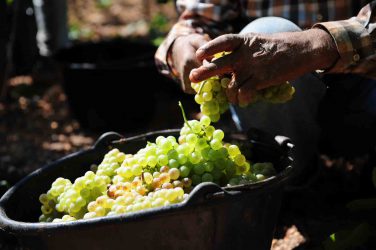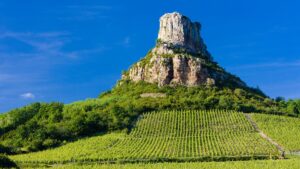
Located in the north-east of the Loire Valley, in the heart of Chavignol – a village reputed for its goat’s cheese – the vines of Domaine Delaporte stretch across more than 30 hectares. A closer look at this historic institution that produces precise wines, typical of the Sancerre appellation.
Since 2010, Matthieu Delaporte has managed the 33 hectares of land owned by his family for over 300 years. Grandson of Vincent Delaporte, he manages the domain with a masterful hand, raising it gradually to be among the best of the appellation by producing subtle and precise Sancerre. Indeed, this winemaker has never hesitated to question his own methods and reveals a great eye for detail throughout the production process, from vine to cellar. Also, impassioned by the desire to pass on his domain to future generations, he follows the principles of organic agriculture.
In this continued venture to treat the land with utmost respect, the domain grows vines on more than thirty plots, thus offering a great variety of terroirs. Some among them, such as Monts Damnées, Cul de Beaujeu and La Côte have already gained a solid reputation. This young winemaker grows only two grape varieties: Sauvignon Blanc (75%) and Pinot Noir (25%). Most of his parcels benefit from an ideal exposure to the south as well as flint and chalk soils in which the vines have been growing for an average of 35 years. These optimal conditions promise a beautiful expression of the grape varieties and the typical style of Sancerre.
Following an organic philosophy, the vines are harvested by hand and by parcel. Then the main objective of vinification is to highlight the terroir of this domain, considered a forebearer of the appellation. Delaporte therefore limits human intervention and the use of sulphur. Patience is a word that comes into its own in Domaine Delaporte: the élevage on lees is long, without racking, and is followed by further élevage in 228-litre casks for the Pinot Noir, and in vats or demi-muids for the white wines. After precise blending, the reds turn out to be delicate, round, and powerful, whilst the Sauvignons stand out for their purity, minerality and richness.
Made for ageing, Domaine Delaporte’s Sancerres have found their place on the international market, and their notoriety is progressing nicely on home soil. This is why we are proud to present this rising star to you!
What do the guides say?
Bettane+Desseauve – 2* out of 5
Mathieu Delaporte is one of several young winemakers who are now the pride of Sancerre. His 33 hectares located in Chavignol are grown with care and demonstrate great originality with 50 different parcels, 80% of them exposed to the south. 35% of these vines are in flint soil, a rare proportion for Sancerre. The richness of this terroir allows for the creation of fine, single-parcel cuvées and blended wines, complete and harmonious. Since the prices are still reasonable, it’s best to reserve some just after the harvest, as word of this wine’s success is getting around.
Domaine Delaporte wines at iDealwine
Sancerre Les Monts Damnés (white) 2017
With its roots in one of the appellation’s most rugged appellations, this wine is the fruit of Sauvignon Blanc fermented in 600-litre barrels and an élevage of between 8 months and a year. It has a lovely golden yellow colour, a powerful nose in which white fruit and gentle spices dominate. At once sweet and velvety, its palate is balanced by salty and mineral overtones.
Sancerre Chavignol (white) 2018
This clear-gold Sancerre presents an intense bouquet of white-fleshed fruits and citrus. It expresses a pleasant balance of freshness and fruitiness. Its liveliness and minerality give the wine a pleasant length and make it the perfect accompaniment for delicate dishes. This is the result of the domain’s choice to ferment the grapes in thermoregulated stainless steel vats and mature them on lees for six months.
Sancerre Silex (white) 2018
This cuvée is made from vines planted around 40 years ago following sustainable agriculture. Whole grape bunches from the harvest are put through a pneumatic press in order to produce a clear and delicate juice. This is then raised in 2000-litre barrels for between 8 months and a year. The resulting wine is therefore crystalline, impressed with notes of white fruit (apple, pear), citrus and minerals. Its attack is ample and round, with a long, mineral finish typical of the Sancerre terroir.
Sancerre Le Cul de Beaujeau (red) 2017
Le Cul de Beaujeau is the fruit of a 25-day maceration (to extract maximum colour and flavour) and a year-long élevage in 228-litre barrels of 25% new wood. Its dark hue brings with it elegant notes of black fruits, mint and dried fruits. Its finesse and elegance sustain a long finish. Its density makes it the perfect accompaniment for a meat dish.
Sancerre Silex (red) 2017
This cuvée is made from 40-year-old vines grown in chalk and clay soils following sustainable principles. Once harvested by hand, the berries were macerated for more than 20 days to bring out the best colour and aromas. The wine was matured for a year in 228-litre barrels and bottled without fining or filtering. It has a beautiful, sombre colour with violet streaks. On the palate, it stands out from other wines of the region due to its depth and generosity. Enlivened by a lovely acidity, it can be successfully aged in the cellar for some years.
Sancerre Chavignol (red) 2018
This Sancerre is a pure Pinot Noir cultivated sustainably on chalky soil. To create it, the domain undertook a total destemming of the grapes, a 25-day maceration, daily stirring, malolactic fermentation in truncated casks, as well as an élevage of 8-12 months in 225-litre barrels. It has an intense appearance, as well as a nose which, logically, takes the notes of Pinot Noir as proven by its red fruit and smoky aromas. The round texture and sapid finish make it one of the loveliest wines to drink from now and during its first ten years around delicate dishes like white meat and vegetables.




